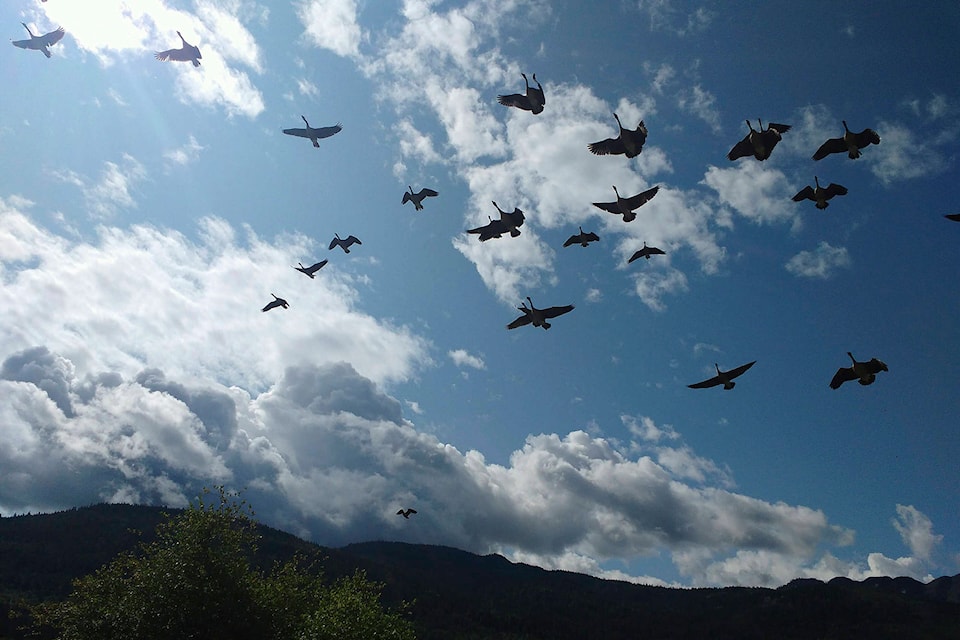A huge Canada goose convention, larger than the average gathering, was held in a Salmon Arm field recently.
A few residents, this reporter included, saw more than 200 geese covering the field at the corner of 10th and 10th SW, just across from Piccadilly Care Centre.
“I just loved it, I couldn’t get over the amount of geese,” remarked resident John McLeod. He’s seen geese in that field before, but not that many.
Ed McDonald with the Shuswap Naturalist Club said the flocks of geese are getting bigger every year.
“We really had no geese at all here in the 1960s; they were introduced and are more of an eastern species,” he says. “In the early 1900s they were shot so much for food. People were very worried they were going to become extinct.”
Read more: Alberta golf cart driver runs over and kills two geese
Read more: Replay - The best videos from across B.C. this week
The foreshore of Shuswap Lake was turned into a goose management area.
“It was used to try to bring the geese back. We were too successful… Be careful what you wish for,” he adds with a chuckle.
He said they seem to enjoy places where people don’t really want them – like golf courses.
“I don’t think farmers mind them in a field; I guess they put nutrients in the soil… A lot of times they will eat in the fields, and will fly to the foreshore for bedtime. They don’t sleep right out in the field, but find a place along the bay. They often go into the water in the morning.”
Regarding farmers, John McLeod says it depends on who you talk to. Some don’t mind, some do.
Jerry Thompson, owner of the field on 10th Avenue SW, said they come to his fields in the spring and again in the fall. They’ll hang around for anywhere from one to four weeks, and then be on their way. Sometimes the crowd is large, sometimes not. He doesn’t mind them.
“They probably eat a fair amount of grass; I don’t think they’re that terrible.”
McDonald said geese migrate to some degree. There are a few subspecies, some smaller ones in the north. For winter they will head south into the U.S.
Read more: Don’t feed birds in the parking lot
Read more: Love of wildlife inspires art
Read more: 2017 - Osprey dive bombs goose nest
During Christmas bird counts in the Shuswap, a fairly large number of Canada geese usually stay, he says.
As long as there’s open water, they’ll hang around. If the lake and ground are covered with snow, they won’t.
“They’re water fowl. They need water to float around in.”
Regarding lake quality, Erin Vieira at the Shuswap Watershed Council says feces from any warm-blooded creature – from dogs to geese – can carry bacteria, as can septic systems. She said management plans can be set up to keep large flocks away from popular swimming beaches.
One plant Canada geese like to eat is European milfoil, which has made itself at home in Shuswap Lake and is visible near the surface. Its introduction into the lake may have played a part in the increasing numbers of geese and swans, McDonald surmises. With their long necks, both species can duck their heads down to reach it.
The internet provides one more interesting tidbit. Canada geese have a penchant for blueberries.
@SalmonArm
marthawickett@saobserver.net
Like us on Facebook and follow us on Twitter
